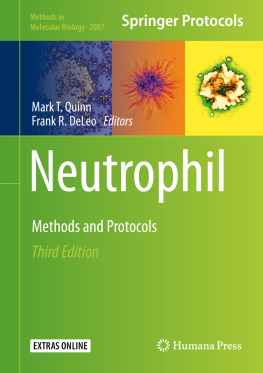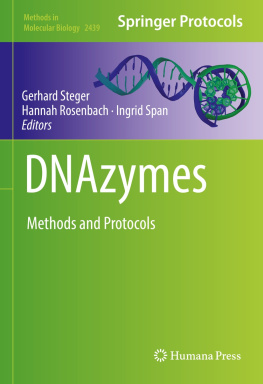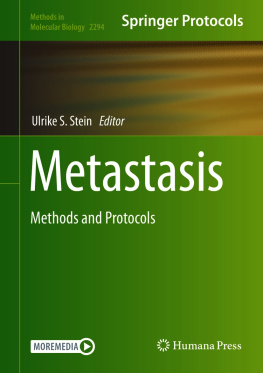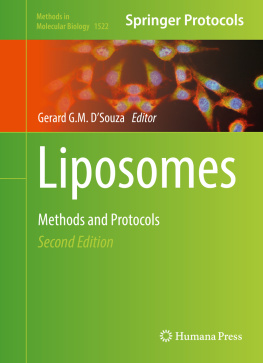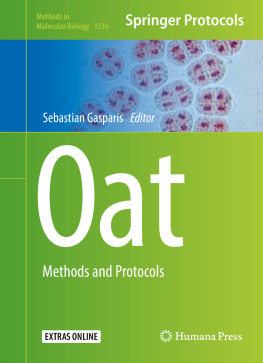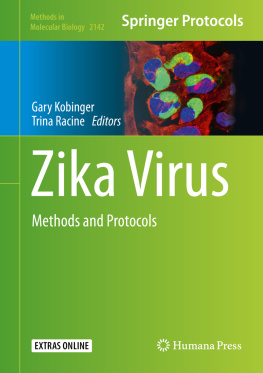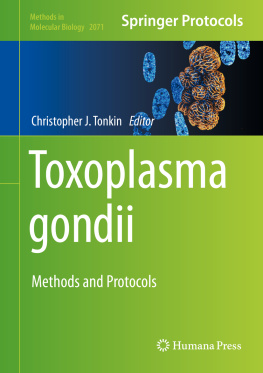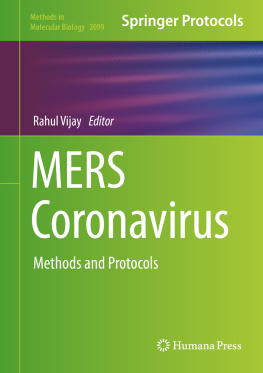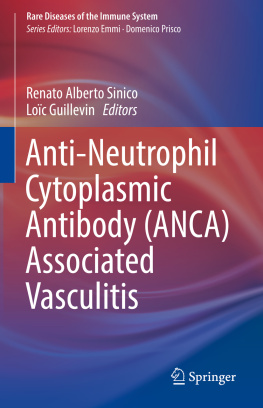Mark T. Quinn - Neutrophil: Methods and Protocols
Here you can read online Mark T. Quinn - Neutrophil: Methods and Protocols full text of the book (entire story) in english for free. Download pdf and epub, get meaning, cover and reviews about this ebook. year: 2020, publisher: Human, genre: Home and family. Description of the work, (preface) as well as reviews are available. Best literature library LitArk.com created for fans of good reading and offers a wide selection of genres:
Romance novel
Science fiction
Adventure
Detective
Science
History
Home and family
Prose
Art
Politics
Computer
Non-fiction
Religion
Business
Children
Humor
Choose a favorite category and find really read worthwhile books. Enjoy immersion in the world of imagination, feel the emotions of the characters or learn something new for yourself, make an fascinating discovery.
- Book:Neutrophil: Methods and Protocols
- Author:
- Publisher:Human
- Genre:
- Year:2020
- Rating:4 / 5
- Favourites:Add to favourites
- Your mark:
- 80
- 1
- 2
- 3
- 4
- 5
Neutrophil: Methods and Protocols: summary, description and annotation
We offer to read an annotation, description, summary or preface (depends on what the author of the book "Neutrophil: Methods and Protocols" wrote himself). If you haven't found the necessary information about the book — write in the comments, we will try to find it.
Neutrophil: Methods and Protocols — read online for free the complete book (whole text) full work
Below is the text of the book, divided by pages. System saving the place of the last page read, allows you to conveniently read the book "Neutrophil: Methods and Protocols" online for free, without having to search again every time where you left off. Put a bookmark, and you can go to the page where you finished reading at any time.
Font size:
Interval:
Bookmark:
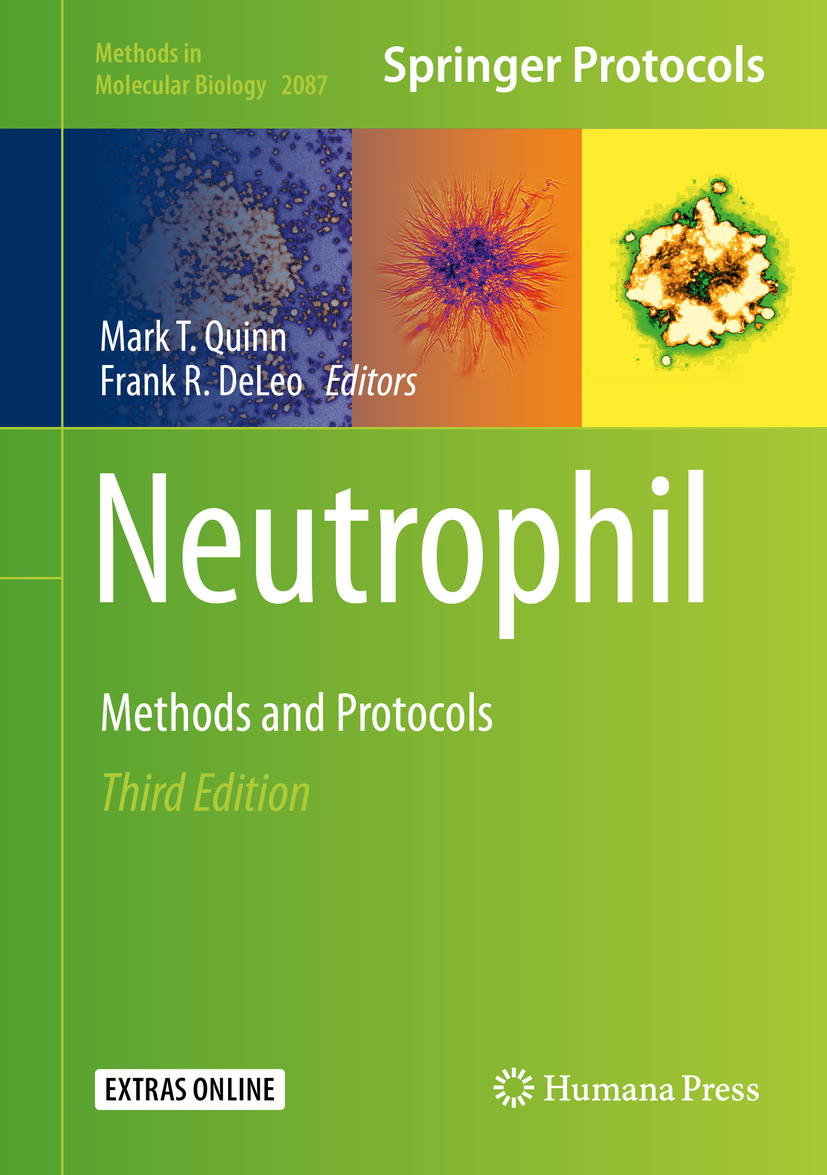
For further volumes: http://www.springer.com/series/7651
For over 35 years, biological scientists have come to rely on the research protocols and methodologies in the critically acclaimedMethods in Molecular Biologyseries. The series was the first to introduce the step-by-step protocols approach that has become the standard in all biomedical protocol publishing. Each protocol is provided in readily-reproducible step-by-step fashion, opening with an introductory overview, a list of the materials and reagents needed to complete the experiment, and followed by a detailed procedure that is supported with a helpful notes section offering tips and tricks of the trade as well as troubleshooting advice. These hallmark features were introduced by series editor Dr. John Walker and constitute the key ingredient in each and every volume of theMethods in Molecular Biologyseries. Tested and trusted, comprehensive and reliable, all protocols from the series are indexed in PubMed.

Cover Caption: Top row, from left to right: 1. Human neutrophil swarming against a cluster of Candida albicans. 2. Aspergillus fumigatus spores were patterned in a cluster and allowed to grow into hyphae. 3. Sytox green staining showing neutrophil extracellular trap release inside a human neutrophil swarm against C. albicans. 4. A patterned cluster of C. albicans yeast. Images taken by Alex Hopke and prepared for cover by Xiao Wang (Center for Engineering in Medicine, Massachusetts General Hospital, Harvard Medical School, Charlestown, MA).
This Humana imprint is published by the registered company Springer Science+Business Media, LLC, part of Springer Nature.
The registered company address is: 233 Spring Street, New York, NY 10013, U.S.A.
This volume is dedicated to Dr. Niels Borregaard (19542017) in recognition of his extensive contributions to neutrophil cell biology, especially in the understanding of neutrophil granule formation, subcellular distribution, and function. Niels was a friend and contributor to the first two editions of this book. This volume is also dedicated to our families, who are tolerant of the time we spend researching neutrophils.
Neutrophils (also known as polymorphonuclear neutrophils (PMNs) or granulocytes) are the most abundant white cell in humans. Granulocytes and/or granulocyte precursors normally comprise ~60% of the nucleated cells in bone marrow and the bloodstream. Mature neutrophils have a typical circulating half-life of 68 h in the blood and then migrate through tissues for ~23 days. Their relatively short lifespan is devoted largely to surveillance for invading microorganisms. During infection, the neutrophil lifespan is extended, granulopoiesis increases, and large numbers of neutrophils are rapidly recruited to the site(s) of infection. Following recognition (binding) and phagocytosis of microorganisms, neutrophils utilize an extraordinary array of oxygen-dependent and oxygen-independent microbicidal weapons to destroy infectious agents. Oxygen-dependent mechanisms involve the production of reactive oxygen species (ROS), while oxygen-independent mechanisms include degranulation and release of lytic enzymes and bactericidal peptides. Inasmuch as these processes are highly effective at killing most ingested microbes, neutrophils serve as the primary cellular defense against infection.
The aim ofNeutrophils: Methods and Protocols, Third Edition,is to provide (1) a set of protocols to assess basic neutrophil functions and (2) protocols for investigating specialized areas in neutrophil research. This volume is designed for the basic researcher involved in the study of neutrophil function. A wide variety of methods have been developed to assess neutrophil function, and these methods have been instrumental in advancing our understanding of the role of neutrophils in host defense and inflammatory disease. For those researchers and clinicians interested in the study of neutrophils, the availability of a comprehensive source of protocols describing the most modern methodological advances in neutrophil biology is invaluable, as many publications do not provide information on the finer details critical to success of a given method. As such, we have compiled a series of protocols written by leading researchers in the field that provide detailed guidelines for establishing and performing the most common neutrophil function assays. Hints of the best way to perform these methods as well as guidance in detecting associated problems are included, so novice investigators will also be able to effectively utilize these assays.
In the third edition ofNeutrophils: Methods and Protocols, chapters retained from previous editions have been updated and include many new approaches. In addition, theThird Editioncontains a number of new chapters that were not included in the first two editions. Part I contains overviews of neutrophil biology and function, and disorders of neutrophils. Part II describes commonly used methods to isolate neutrophils from humans and other animal species. This section also contains a chapter that describes use of a neutrophil transplant model with zebrafish larva. Part III details methods for investigating chemotaxis, transmigration, phagocytosis, and bactericidal activity. Three chapters provide methods used to assess neutrophil transmigration, chemotaxis, or swarming against live microbes. One of the chapters updated from the
Font size:
Interval:
Bookmark:
Similar books «Neutrophil: Methods and Protocols»
Look at similar books to Neutrophil: Methods and Protocols. We have selected literature similar in name and meaning in the hope of providing readers with more options to find new, interesting, not yet read works.
Discussion, reviews of the book Neutrophil: Methods and Protocols and just readers' own opinions. Leave your comments, write what you think about the work, its meaning or the main characters. Specify what exactly you liked and what you didn't like, and why you think so.

